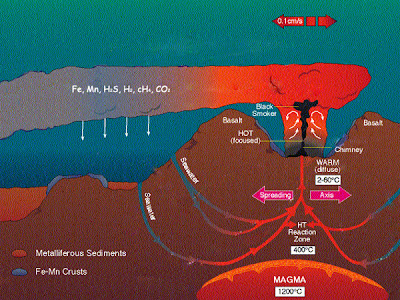An Extremely Hot Time
 |
| NOAA |
The existence of such creatures (and the symbiosis of many) defies evolutionary explanations.
You can read the rest of "Deep-Sea Vents—Life’s Toxic Sanctuary", here.Some locations on earth seem just too extreme to support life. One such extreme environment is vents at the bottom of the ocean that spew out superheated water and toxic chemicals. Yet even here we find an abundance of living things, well designed for life at the extreme.An ugly gash slices across the earth’s surface, zigzagging 49,700 miles (80,000 km) around the globe. Superheated water gushes out of underwater fissures, spewing clouds of toxic chemicals. Temperatures can reach 700°F (400°C), and pressures can exceed 10,000 pounds per square inch. Surely this should be the most desolate spot on the planet.Scientists first discovered hydrothermal (“hot water”) vents in the 1950s and 1960s when improved sonar equipment allowed them to map the ocean floor in rich detail. The vents appeared along mid-ocean ridges, wherever the earth’s plates were pulling apart.When probes reached these murky depths in the 1970s, scientists were surprised to find a bustling community of bizarre creatures, including giant white crabs and odd worm-like creatures called tube worms. In fact, hydrothermal vents may support the most populous habitat on the planet.
